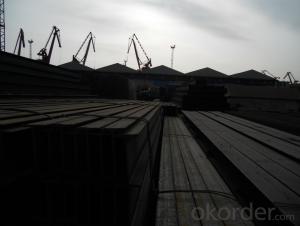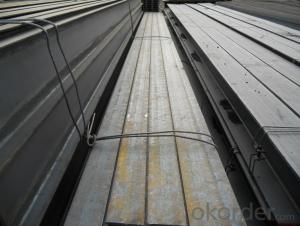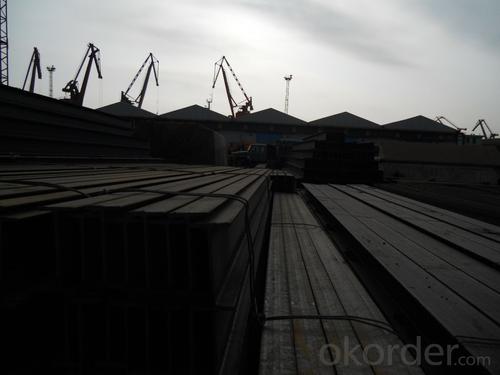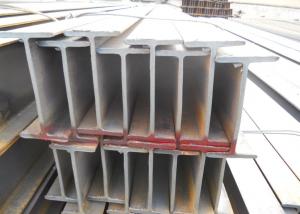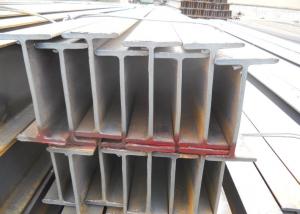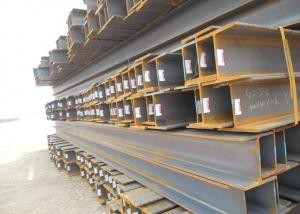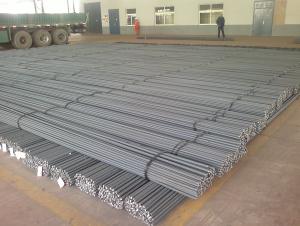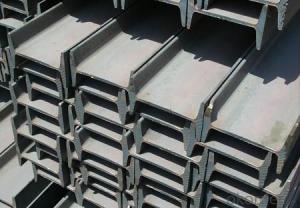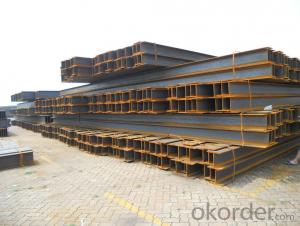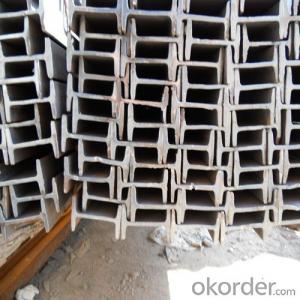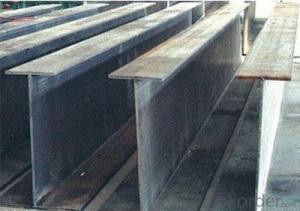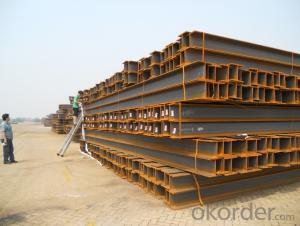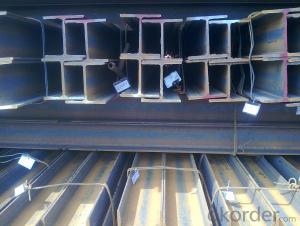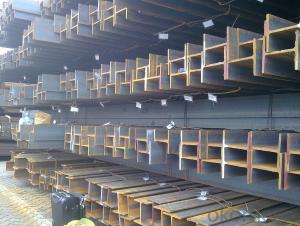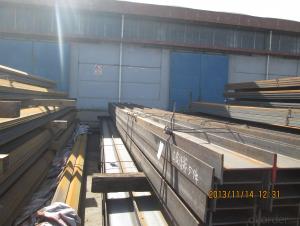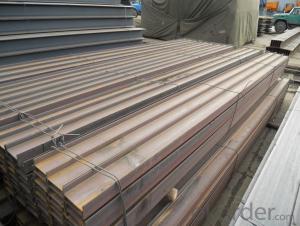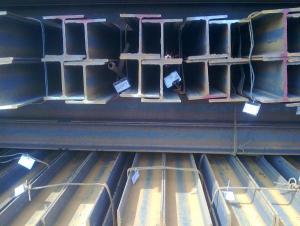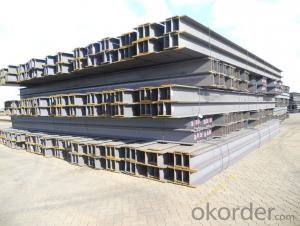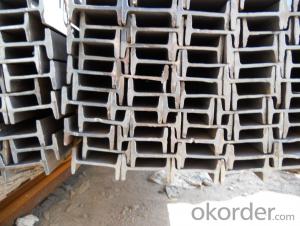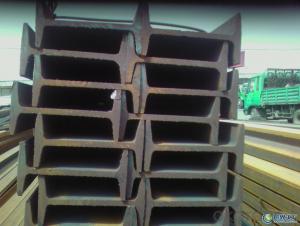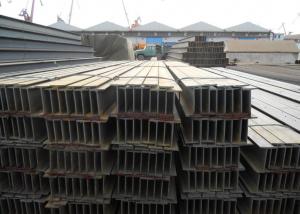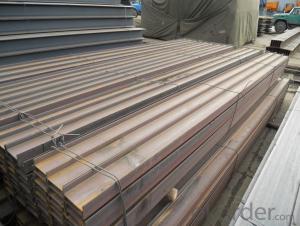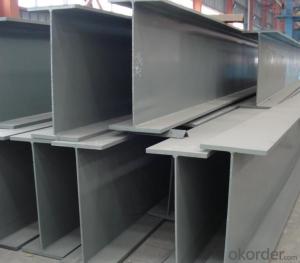H Beam with Multiple Material and Good Quality for Sale
- Loading Port:
- Tianjin
- Payment Terms:
- TT OR LC
- Min Order Qty:
- 25 m.t.
- Supply Capability:
- 20000 m.t./month
OKorder Service Pledge
OKorder Financial Service
You Might Also Like
Specification
Product Description:
OKorder is offering H Beam with Multiple Material and Good Quality for Sale at great prices with worldwide shipping. Our supplier is a world-class manufacturer of steel, with our products utilized the world over. OKorder annually supplies products to European, North American and Asian markets. We provide quotations within 24 hours of receiving an inquiry and guarantee competitive prices.
Product Applications:
H Beam with Multiple Material and Good Quality for Sale are ideal for structural applications and are widely used in the construction of buildings and bridges, and the manufacturing, petrochemical, and transportation industries.
Packaging & Delivery:
Packaging Detail: products are packed in bundle and then shipped by container or bulk vessel, deformed bar is usually naked strapping delivery, when storing, please pay attention to moisture proof. The performance of rust will produce adverse effect.
Each bundle weight: 2-3MT, or as required
Payment term: TT or L/C
Delivery Detail: within 45 days after received advanced payment or LC.
Label: to be specified by customer, generally, each bundle has 1-2 labels
Trade terms: FOB, CFR, CIF
FAQ:
Q1: Why buy Materials & Equipment from OKorder.com?
A1: All products offered byOKorder.com are carefully selected from China's most reliable manufacturing enterprises. Through its ISO certifications, OKorder.com adheres to the highest standards and a commitment to supply chain safety and customer satisfaction.
Q2: How do we guarantee the quality of our products?
A2: We have established an advanced quality management system which conducts strict quality tests at every step, from raw materials to the final product. At the same time, we provide extensive follow-up service assurances as required.
Q3: How soon can we receive the product after purchase?
A3: Within three days of placing an order, we will begin production. The specific shipping date is dependent upon international and government factors, but is typically 7 to 10 workdays.
Images:
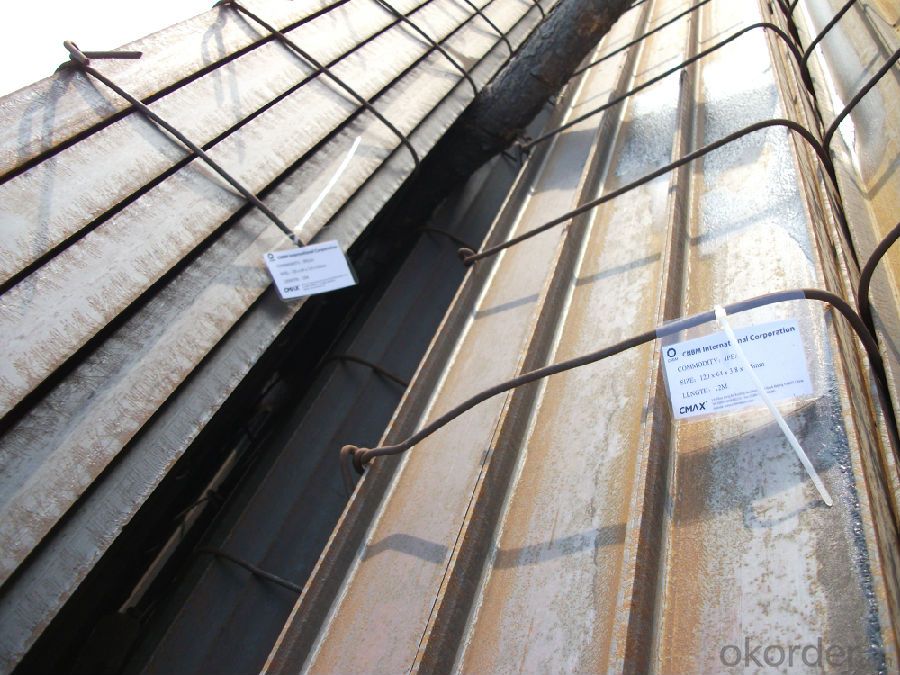
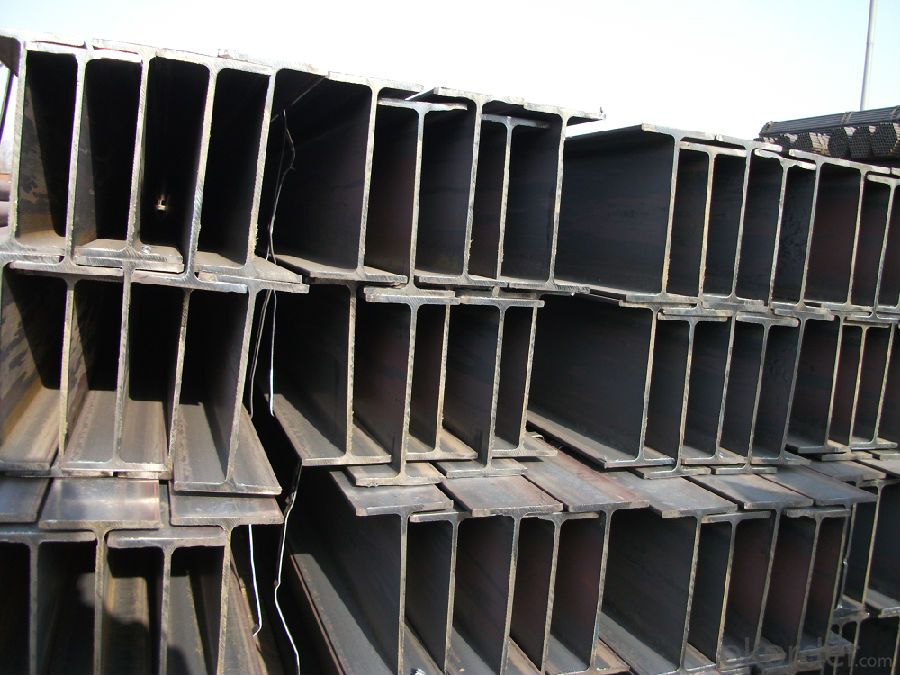
- Q: Can steel H-beams be used for theaters or auditoriums?
- Yes, steel H-beams can be used for theaters or auditoriums. Steel H-beams are commonly used in construction for their strength and load-bearing capabilities. They provide structural support and can withstand heavy loads, making them suitable for large spaces like theaters or auditoriums. Additionally, steel H-beams offer flexibility in design, allowing for open and spacious layouts that are often desired in these types of venues.
- Q: Are steel H-beams suitable for structures with large spans?
- Yes, steel H-beams are suitable for structures with large spans. They are known for their high strength-to-weight ratio and ability to withstand heavy loads, making them an ideal choice for long-span structures such as bridges, industrial buildings, and large-scale infrastructure projects. The H-shape of the beam provides excellent structural support and stability, allowing for greater spans without compromising structural integrity.
- Q: Can steel H-beams be used for hospitals?
- Yes, steel H-beams can be used for hospitals. Steel H-beams are commonly used in construction projects, including hospitals, due to their strength, durability, and ability to support heavy loads. They provide structural integrity and can be used for various applications such as framing, support columns, and beams in hospital buildings.
- Q: How do steel H-beams perform in structures with heavy machinery and equipment?
- Structures that incorporate heavy machinery and equipment greatly benefit from the exceptional performance of steel H-beams. H-beams possess a distinctive design that efficiently withstands the significant loads and stresses commonly associated with heavy machinery and equipment. The horizontal flanges of H-beams offer excellent resistance against bending and twisting forces, making them an ideal choice for supporting heavy loads. Additionally, the vertical web functions as a stiffener, providing superior strength and stability to the structure. Furthermore, steel H-beams exhibit high tensile strength, enabling them to withstand the dynamic loads generated by heavy machinery and equipment. Consequently, this ensures a safer working environment by minimizing the risk of structural failure or collapse. Regarding durability, steel H-beams display remarkable resistance to deformation, corrosion, and other environmental factors. This guarantees their long-term performance, even in demanding industrial settings. Moreover, steel H-beams are easily fabricated and installed, contributing to their popularity in structures with heavy machinery and equipment. Their versatility allows for efficient construction and adaptability to various design requirements. In conclusion, steel H-beams prove to be an excellent choice for structures incorporating heavy machinery and equipment. Their unique design, high strength, and durability equip them to withstand the significant loads and stresses associated with such applications.
- Q: Can steel H-beams be used for utility poles?
- Using steel H-beams for utility poles is not advisable. Utility poles are typically constructed using wood or concrete due to their specific properties that make them more suitable for this purpose. Wood is a lightweight material that is easy to handle and provides effective insulation against electricity. On the other hand, concrete poles are highly durable, resistant to various weather conditions, and have a longer lifespan compared to wood poles. Steel H-beams, however, are primarily utilized in construction for structural support in buildings and bridges. Although they possess great strength and can withstand heavy loads, they are not designed to meet the specific requirements of utility poles, such as electrical insulation and resistance to rot and decay. Therefore, it is not recommended to employ steel H-beams for utility poles.
- Q: Can Steel H-Beams be used in bridge or infrastructure construction?
- Certainly! Bridge or infrastructure construction can indeed utilize steel H-beams. The construction industry widely employs steel H-beams due to their robustness, endurance, and versatility. These H-beams possess a remarkable capacity for bearing heavy loads, rendering them suitable for the support of substantial burdens in bridge structures. By functioning as primary structural elements in bridge girders, H-beams confer the essential strength and stability required for bridges to withstand diverse loads, including the weight of vehicles and pedestrians. Moreover, H-beams commonly find application in the construction of infrastructure such as buildings, highways, and railway tracks. Their adaptability facilitates efficient construction and affords design flexibility, thus establishing steel H-beams as a favored option in bridge and infrastructure projects.
- Q: Can steel H-beams be used for warehouses?
- Warehouses can indeed utilize steel H-beams, as they are widely employed in the construction sector for their robustness, endurance, and capacity to bear heavy loads. These beams offer a steadfast and dependable structural framework for various edifices, including warehouses. The distinctive H-shape of the beam facilitates even weight distribution and the ability to withstand substantial loads. Moreover, steel H-beams are adaptable and easily customizable, enabling them to be tailored and assembled according to the specific requirements of a warehouse, such as desired dimensions, elevation, and layout. In summary, steel H-beams are a favored option for warehouses owing to their structural integrity and their capability to support extensive storage capacities.
- Q: Are steel H-beams resistant to fire?
- Yes, steel H-beams are highly resistant to fire. Due to their high melting point and excellent structural integrity, steel H-beams can withstand high temperatures and maintain their strength even during a fire. This makes them a popular choice for structural support in buildings and other fire-prone environments.
- Q: What are the load distribution characteristics of steel H-beams?
- The load distribution characteristics of steel H-beams are primarily determined by the shape and design of the beam. H-beams, also known as I-beams or W-beams, have a distinctive cross-sectional shape that consists of two flanges connected by a web. This shape provides excellent load-bearing capabilities and allows for the efficient distribution of weight along the length of the beam. One of the key load distribution characteristics of steel H-beams is their ability to support heavy loads over long spans. The flanges, which are located at the top and bottom of the beam, are designed to resist bending and twisting forces, allowing the beam to carry substantial loads without excessive deflection. The load distribution along an H-beam is also influenced by the ratio of the flange width to the web depth. A wider flange width relative to the web depth results in a more distributed load, as the flanges can better resist lateral forces. Conversely, a narrower flange width relative to the web depth concentrates the load towards the center of the beam. Additionally, the load distribution characteristics of H-beams can be modified by varying the dimensions and material properties of the beam. By adjusting parameters such as the flange thickness, web height, and steel grade, engineers can tailor the load distribution capabilities of H-beams to meet specific structural requirements. Overall, steel H-beams are known for their excellent load distribution characteristics, making them a popular choice in construction and engineering applications where strong, durable, and efficient load-bearing capabilities are required.
- Q: How are steel H-beams used in the construction of sports stadiums?
- Steel H-beams are a critical component in the construction of sports stadiums due to their strength and versatility. These beams, shaped like the letter "H," are designed to support heavy loads and provide structural stability. In sports stadium construction, H-beams are primarily used to form the skeleton framework of the building. They are typically used to create the structural supports for the roof, seating areas, and other critical areas of the stadium. One of the main advantages of H-beams is their ability to span long distances while carrying heavy loads. This makes them the ideal choice for creating large, open spaces within the stadium, such as the playing field, concourses, and seating areas. Additionally, H-beams are often used in conjunction with other steel components, such as columns and trusses, to create a robust and durable structure. This combination allows for efficient load distribution and ensures the stadium can withstand the forces it may experience, including wind, seismic activity, and the weight of the spectators. Another benefit of using steel H-beams in sports stadium construction is their adaptability. These beams can be easily fabricated to specific lengths and sizes, allowing for customized designs and efficient construction processes. They can also be easily joined together using welding or bolting techniques, enabling rapid assembly on-site. Furthermore, steel H-beams are highly resistant to corrosion, which is essential in sporting stadium environments where moisture and harsh weather conditions can be present. This resistance helps to ensure the longevity and safety of the structure over time. Overall, steel H-beams play a crucial role in the construction of sports stadiums by providing the necessary strength, stability, and versatility required for these large-scale structures. Their ability to support heavy loads, span long distances, and withstand various forces makes them an ideal choice for creating safe, functional, and visually stunning sporting venues.
Send your message to us
H Beam with Multiple Material and Good Quality for Sale
- Loading Port:
- Tianjin
- Payment Terms:
- TT OR LC
- Min Order Qty:
- 25 m.t.
- Supply Capability:
- 20000 m.t./month
OKorder Service Pledge
OKorder Financial Service
Similar products
Hot products
Hot Searches
Related keywords
